| Listing 1 - 10 of 16 | << page >> |
Sort by
|
Book
ISBN: 0815752628 081575261X 9780815752622 9780815752615 Year: 1990 Publisher: Washington Brookings institution
Abstract | Keywords | Export | Availability | Bookmark
 Loading...
Loading...Choose an application
- Reference Manager
- EndNote
- RefWorks (Direct export to RefWorks)
Foreign trade policy --- United States --- Japan --- Balance of trade --- J4540 --- -JP / Japan - Japon --- US / United States of America - USA - Verenigde Staten - Etats Unis --- 382.51 --- 382.30 --- 380.50 --- Deficits, Trade --- Trade, Balance of --- Trade balance --- Trade deficits --- Trade surpluses --- Surpluses, Trade --- International trade --- Balance of payments --- Mercantile system --- Payment --- Japan: Economy and industry -- commerce and trade -- international trade, economic relations and policy --- Aard, belang en evolutie. Handelsbalans. J curve. --- Handels- en wisselpolitiek in hun verband met de buitenlandse handel: algemeenheden. --- Structuur en organisatie van de handel (algemeenheden). --- Commercial policy. --- JP / Japan - Japon --- Structuur en organisatie van de handel (algemeenheden) --- Handels- en wisselpolitiek in hun verband met de buitenlandse handel: algemeenheden --- Aard, belang en evolutie. Handelsbalans. J curve --- al-Yābān --- Giappone --- Government of Japan --- Iapōnia --- I︠A︡ponii︠a︡ --- Japam --- Japani --- Japão --- Japon --- Japonia --- Japonsko --- Japonya --- Jih-pen --- Mư̄ang Yīpun --- Nihon --- Nihon-koku --- Nihonkoku --- Nippon --- Nippon-koku --- Nipponkoku --- Prathēt Yīpun --- Riben --- State of Japan --- Yābān --- Yapan --- Yīpun --- Zhāpān --- Япония --- اليابان --- يابان --- 日本 --- 日本国 --- Balance of trade - Japan. --- Jepun --- Yapon --- Yapon Ulus --- I︠A︡pon --- Япон --- I︠A︡pon Uls --- Япон Улс --- United States of America
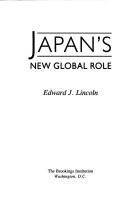
ISBN: 081575258X 9780815752585 Year: 1993 Publisher: Washington Brookings institution
Abstract | Keywords | Export | Availability | Bookmark
 Loading...
Loading...Choose an application
- Reference Manager
- EndNote
- RefWorks (Direct export to RefWorks)
International relations. Foreign policy --- International economic relations --- Japan --- Foreign economic relations --- J4300.90 --- J4562 --- J4540 --- Japan: Economy and industry -- history -- postwar Shōwa (1945- ), Heisei period (1989- ), contemporary --- Japan: Economy and industry -- finance -- money --- Japan: Economy and industry -- commerce and trade -- international trade, economic relations and policy --- Foreign economic relations. --- al-Yābān --- Giappone --- Government of Japan --- Iapōnia --- I︠A︡ponii︠a︡ --- Japam --- Japani --- Japão --- Japon --- Japonia --- Japonsko --- Japonya --- Jih-pen --- Mư̄ang Yīpun --- Nihon --- Nihon-koku --- Nihonkoku --- Nippon --- Nippon-koku --- Nipponkoku --- Prathēt Yīpun --- Riben --- State of Japan --- Yābān --- Yapan --- Yīpun --- Zhāpān --- Япония --- اليابان --- يابان --- 日本 --- 日本国 --- Japan - Foreign economic relations --- Jepun --- Yapon --- Yapon Ulus --- I︠A︡pon --- Япон --- I︠A︡pon Uls --- Япон Улс

ISBN: 9780801446221 Year: 2007 Publisher: Ithaca (N.Y.) Cornell University Press
Abstract | Keywords | Export | Availability | Bookmark
 Loading...
Loading...Choose an application
- Reference Manager
- EndNote
- RefWorks (Direct export to RefWorks)
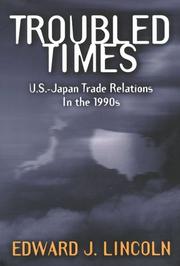
ISBN: 0815752687 Year: 1999 Publisher: Washington, D.C. Brookings Institution
Abstract | Keywords | Export | Availability | Bookmark
 Loading...
Loading...Choose an application
- Reference Manager
- EndNote
- RefWorks (Direct export to RefWorks)
Foreign trade. International trade --- Japan --- United States of America
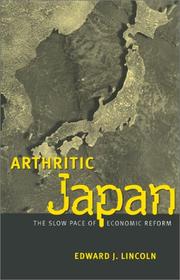
ISBN: 0815700741 0815700733 Year: 2001 Publisher: Washington, D.C. Brookings Institution
Abstract | Keywords | Export | Availability | Bookmark
 Loading...
Loading...Choose an application
- Reference Manager
- EndNote
- RefWorks (Direct export to RefWorks)
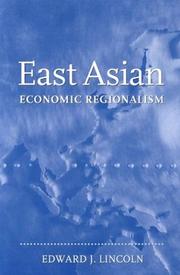
ISBN: 0815752164 0815752172 0815796374 Year: 2004 Publisher: New York : Washington, D.C. : Council on Foreign Relations ; Brookings Institution Press,
Abstract | Keywords | Export | Availability | Bookmark
 Loading...
Loading...Choose an application
- Reference Manager
- EndNote
- RefWorks (Direct export to RefWorks)
A Brookings Institution Press and the Council on Foreign Relations publication Something new is happening across East Asia. A region notable for its lack of internal economic links is discussing regional cooperation on trade, investment, and exchange rates. Because of negotiations elsewhere around the globe on regional trade--such as those that led to the consolidation of the European Union, the formation of the North American Free Trade Area, and the rapid proliferation of bilateral free trade areas--the talk is not surprising. Nevertheless, East Asia's past inertia with regard to forming a regional partnership raises many questions about its emerging regionalism. Why has the region suddenly shifted from taking a global approach to economic issues to discussing a regional bloc? How fast and how far will the new regionalism progress? Will the region become a version of the European Union, or something far less? What is the probable impact on American economic and strategic interests--are the likely developments something that the U.S. government should encourage or discourage? Edward Lincoln takes up these questions, exploring what is happening to regional trade and investment flows and what sort of regional arrangements are the most sensible. Lincoln argues that an exclusive grouping is unlikely. Free trade negotiations have brought some economies in the region together, but they also have led to links with nations outside the region. Some regional governments most notably Japan, continue to have difficulty embracing the concept of free trade, even with favored regional partners. In the wake of the Asian financial crisis, governments also have looked at cooperating on exchange rates, but they have done little to move forward. The U.S. government must decide how to respond to these developments in East Asia. An exclusively Asian form of regionalism could run counter to American economic interests, and the U.S. government has reacted negatively to some of these proposals in the past. Because trade and investment links between the co.
Article
Year: 1992 Publisher: Paris : OECD Publishing,
Abstract | Keywords | Export | Availability | Bookmark
 Loading...
Loading...Choose an application
- Reference Manager
- EndNote
- RefWorks (Direct export to RefWorks)
Japan is in the process of developing much closer economic ties with its Asian neighbours, at both the government and private-sector levels. While there is little official support in Japan for the creation of any formal regional integration scheme, there is evidence of Japanese behaviour leading to what can be termed soft regionalisation with Japan as the dominant actor. A major increase in direct investment, supported by large amounts of foreign aid helping to create the necessary infrastructure for that investment, is the principal vehicle for the increasing Japanese involvement in Asia. Regional trade flows have shown less of a shift toward Japan, but that could change in the 1990s. The developing nations of Asia have been quite receptive to this rapid increase in the Japanese economic presence, and would be quite foolish to restrict the inflow of foreign aid and direct investment. Recipient countries should recognize however that the co-ordination between ...
Development --- Japan
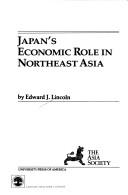
ISBN: 0819156779 Year: 1987 Publisher: Lanham University press of America
Abstract | Keywords | Export | Availability | Bookmark
 Loading...
Loading...Choose an application
- Reference Manager
- EndNote
- RefWorks (Direct export to RefWorks)
East Asia --- Japan --- United States --- Economic conditions. --- Foreign economic relations --- Economic conditions
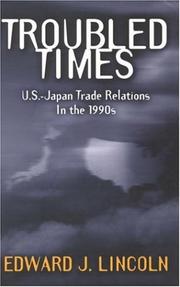
ISBN: 0815752679 Year: 1999 Publisher: Washington, D.C. Brookings Institution Press
Abstract | Keywords | Export | Availability | Bookmark
 Loading...
Loading...Choose an application
- Reference Manager
- EndNote
- RefWorks (Direct export to RefWorks)
Book
ISBN: 0815798717 Year: 2001 Publisher: Washington, D.C. : Brookings Institution Press,
Abstract | Keywords | Export | Availability | Bookmark
 Loading...
Loading...Choose an application
- Reference Manager
- EndNote
- RefWorks (Direct export to RefWorks)
In the late 1980s, Japan's strong economic performance put it on a the verge of becoming a major player in regional and global affairs. But nearly a decade of economic stagnation, a mounting of bad debts, and a continuing stream of scandals have tarnished the country's distinctive economic model. At the turn of the millennium, the Japanese economy remained mired in a pattern of stagnation. As this disappointing condition dragged on, the government pursued policies to restore economic health. Yet Japan has been slow to embrace the systemic reform on which a robust economic recovery depends. In Arthritic Japan, Edward J. Lincoln examines the causes and implications of this weak response. Concluding that Japan is unlikely to pursue the vigorous reform necessary for economic growth, Lincoln warns of serious consequences: a stumbling economy bedeviled by recession and financial crisis, eroding leadership in economic and security issues, a continued defensive trade posture, and a disgruntled population that could turn a more nationalistic stance in foreign policy.
Japan --- Economic conditions --- Economic policy
| Listing 1 - 10 of 16 | << page >> |
Sort by
|

 Search
Search Feedback
Feedback About UniCat
About UniCat  Help
Help News
News